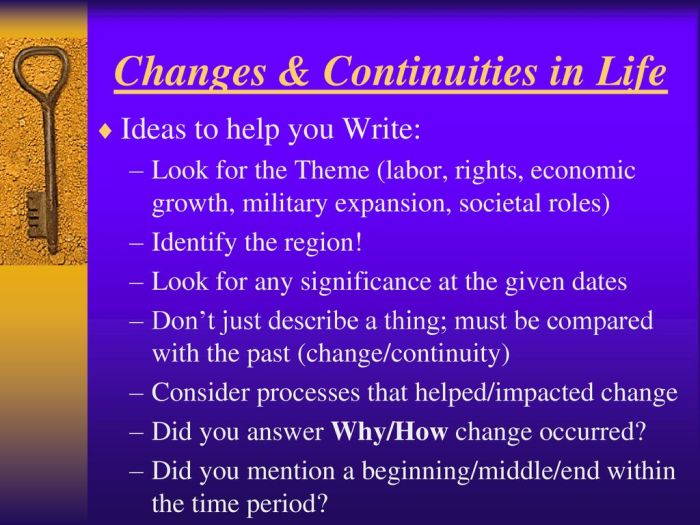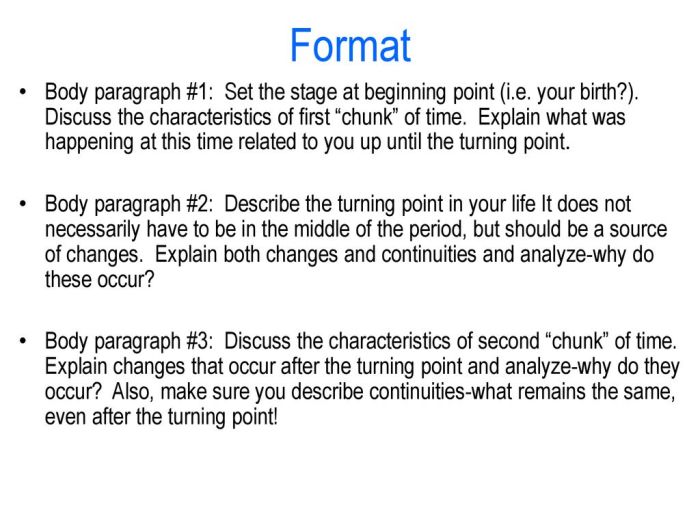Describe continuities in social roles during this time period. transports us back to a bygone era, inviting us to delve into the intricate tapestry of social structures that shaped the lives of individuals. This exploration unveils the enduring patterns that persisted amidst the tides of change, offering insights into the foundations of human society.
As we embark on this journey through time, we will uncover the intricate interplay between social classes, family dynamics, gender roles, economic activities, political institutions, religious beliefs, educational opportunities, and cultural norms. Each of these facets played a pivotal role in shaping the social landscape, influencing the daily lives and aspirations of people.
Social Structures

During this time period, society was structured into distinct social classes, each with its own set of roles and expectations.
Social Hierarchy
The social hierarchy was based on a combination of factors, including birth, wealth, and occupation. The upper classes, consisting of the aristocracy and wealthy landowners, held the most power and influence.
The middle classes, composed of merchants, artisans, and professionals, had a more limited role in society but enjoyed a comfortable standard of living.
The lower classes, including peasants, laborers, and servants, were at the bottom of the social hierarchy and had few opportunities for advancement.
Impact of Social Mobility
Social mobility, or the movement of individuals between social classes, was limited but not impossible. Some individuals could rise in status through marriage, military service, or exceptional talent.
However, for the majority of people, their social class was determined at birth and remained unchanged throughout their lives.
Family and Kinship

Families were the basic unit of society and played a crucial role in social organization.
Family Structure, Describe continuities in social roles during this time period.
Families were typically patriarchal, with the father as the head of the household and the mother responsible for raising the children and managing the home.
Extended families, consisting of multiple generations living under one roof, were common, especially in rural areas.
Roles and Responsibilities
Fathers were responsible for providing for the family, making major decisions, and representing the family in public.
Mothers were responsible for childcare, household management, and educating the children.
Children were expected to obey their parents and contribute to the family’s well-being.
Kinship Networks
Kinship networks were important for providing support and security.
Individuals could rely on their extended family for help with childcare, financial assistance, and social connections.
Gender Roles: Describe Continuities In Social Roles During This Time Period.

Gender roles were strictly defined and reinforced by social norms.
Gender Expectations
Men were expected to be strong, courageous, and assertive.
Women were expected to be gentle, submissive, and nurturing.
These roles were reflected in the division of labor, with men primarily responsible for public affairs and women for domestic duties.
Opportunities and Limitations
Gender roles influenced opportunities and limitations for individuals.
Men had more access to education, employment, and political power.
Women were often confined to the domestic sphere and had limited opportunities for personal growth and advancement.
Frequently Asked Questions
What were the primary social classes during this time period?
The social hierarchy typically comprised nobles, clergy, merchants, artisans, and peasants, each with distinct roles and privileges.
How did gender roles impact opportunities and limitations?
Gender roles prescribed specific behaviors and expectations for men and women, influencing their access to education, employment, and social participation.
What was the role of religion in shaping social norms?
Religious beliefs and practices played a significant role in shaping moral codes, social values, and the daily lives of individuals.
